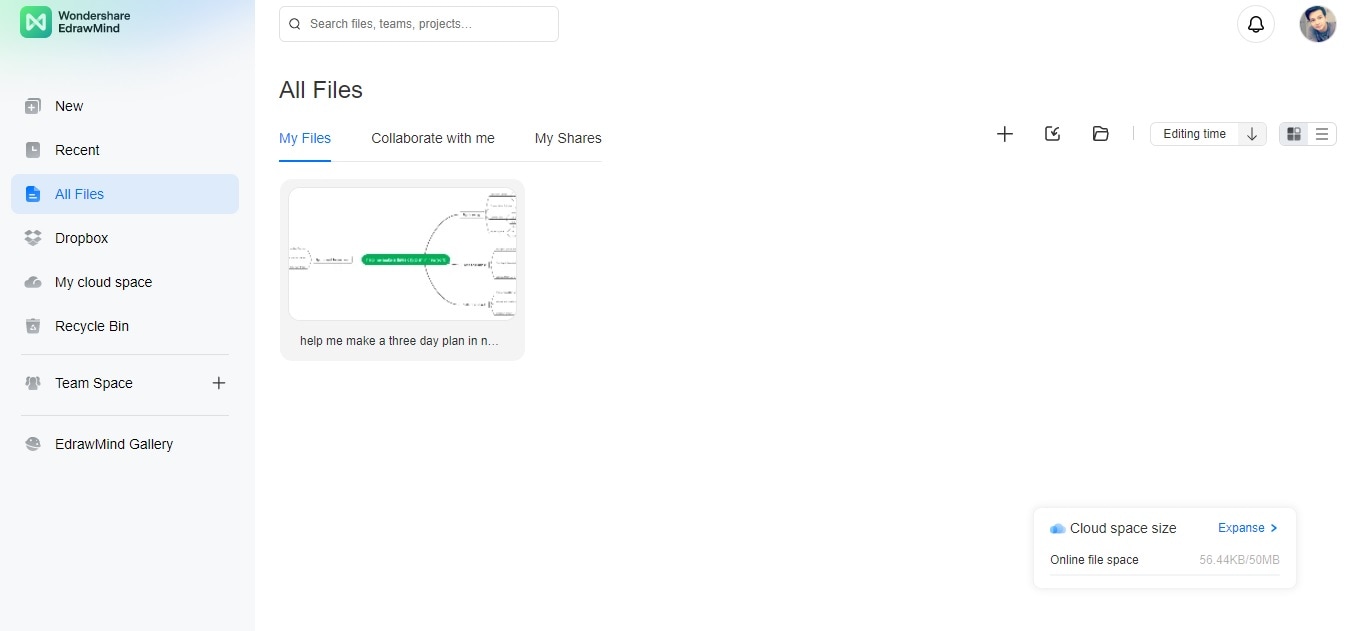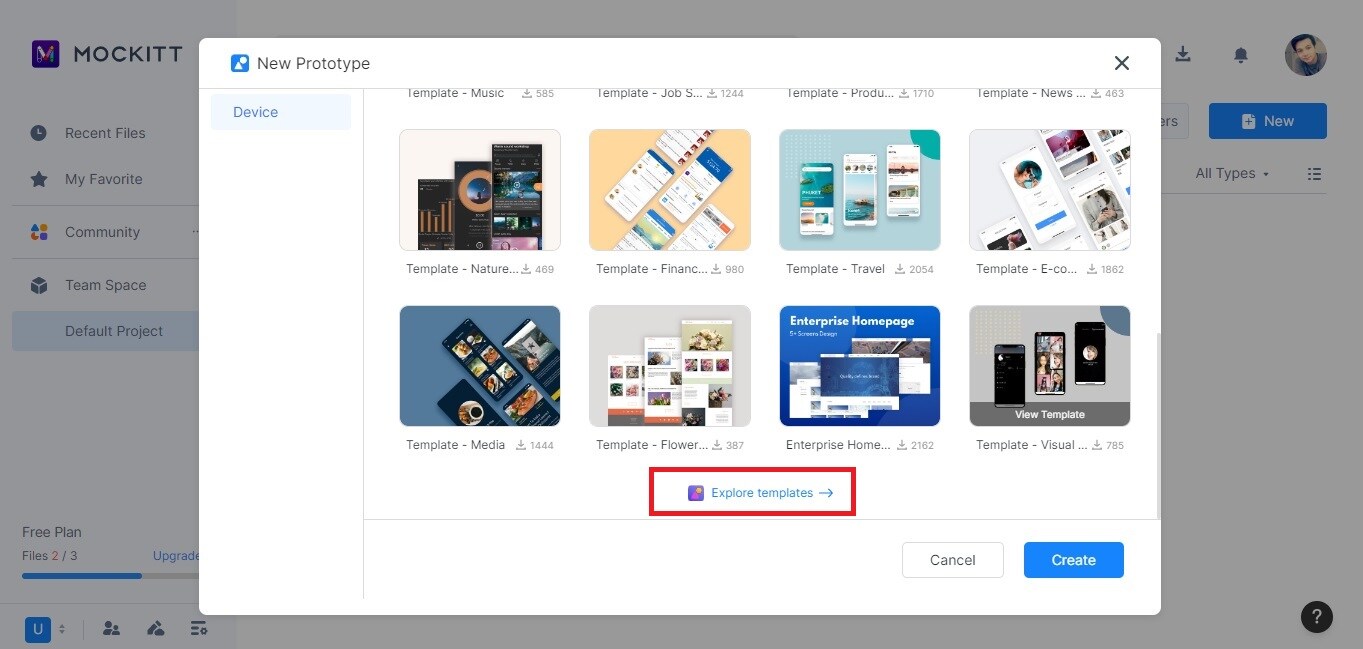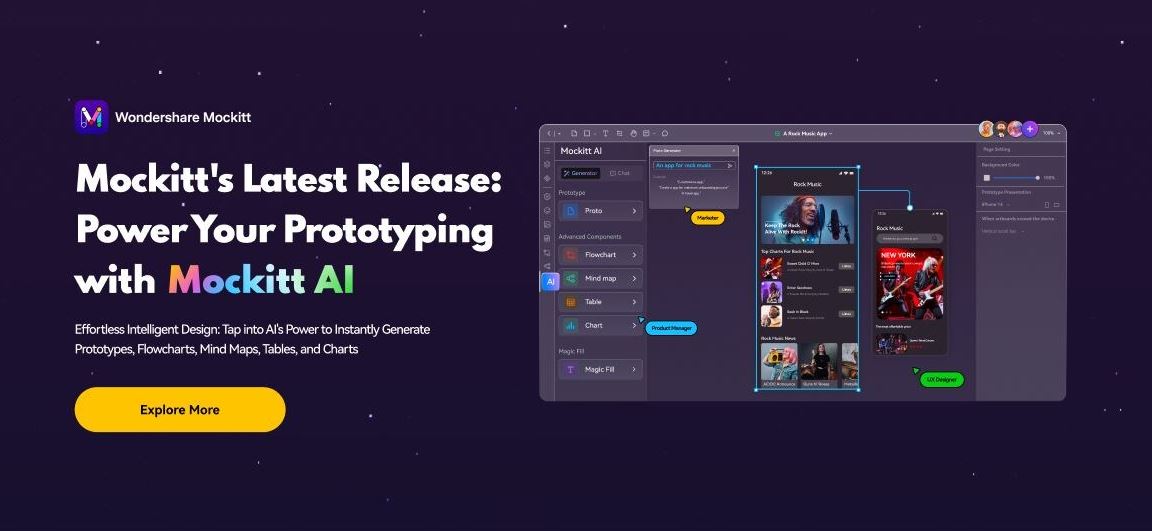Talking to AI Chatbots and How They Streamline Prototyping
Talking to AI chatbots emerged as a powerful tool in digital communications today. They streamline various processes to ease every user's workload. Popular apps like ChatGPT and Bard AI have become the go-to prototyping platform.
Through these apps, users can initiate an online chat with AI. Free chat AI services have made it accessible to a wider audience. It allows individuals to have productive conversations and collaborate with virtual assistants. This article will explore how to take advantage of artificial intelligence online. Read on below to learn more.
- Part I: The Pros and Cons of Using AI Chatbots for Content Creation in Design
- Part II: Top 5 AI Chatbots for Prototyping or UX Designs
- Part III: The Best AI Chatbot for Prototyping or UX Design in 2023
- Part IV: How To Generate Prototypes Using Mockitt AI [Step By Step]
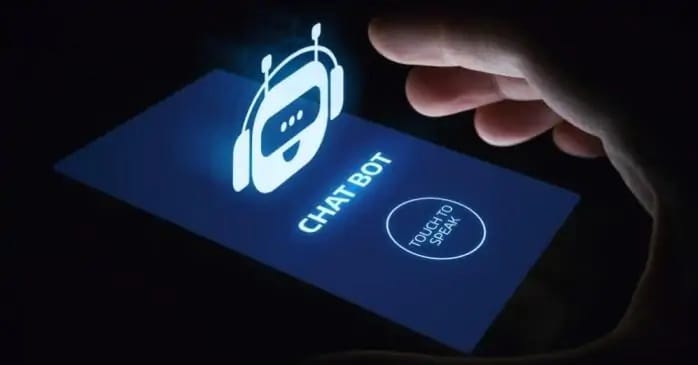
You must weigh these pros and cons when considering AI chatbots for content creation. They offer both advantages and disadvantages to the table, so choose wisely.
Pros
Unlike the run-of-the-mill features of common AI chatbots, some are endowed with the strength to excel in content creation, as listed below:
- Enhanced Efficiency. AI chatbots can generate content quickly and efficiently. They save time and effort for designers. AI chatbots can quickly produce a large text volume, thereby significantly boosting productivity.
- Consistent Quality. AI chatbots adhere to predefined rules and algorithms. It ensures a consistent level of quality in content creation. You can rely on them to maintain a specific tone, style, or brand voice.
- Scalability. AI chatbots enable scalability by handling multiple tasks simultaneously. They provide instant responses and engage with users 24/7. It vastly improves customer service and user experience.
Cons
Like each coin with two sides, AI chatbots still face some challenges.
- Lack of Human Touch. AI chatbots may lack the personal touch and emotional intelligence that human interaction offers. They might struggle to understand nuanced queries or provide empathetic responses. This can sometimes lead to a less satisfying user experience.
- Limited Creativity. AI chatbots excel at generating content based on patterns and algorithms. However, they may struggle with creative and out-of-the-box thinking. You may find it challenging to rely solely on chatbots for innovative ideas.
- Error Prone. AI chatbots are still prone to errors and may produce inaccurate or nonsensical content. If not monitored and corrected promptly, this can harm a brand's reputation and trust.
The five AI chatbots compiled below provide designers with the tools and features needed for the prototyping and UX design process.
Open ChatGPT
OpenAI's ChatGPT excels in natural language processing and understanding user inputs related to prototyping or UX designs.
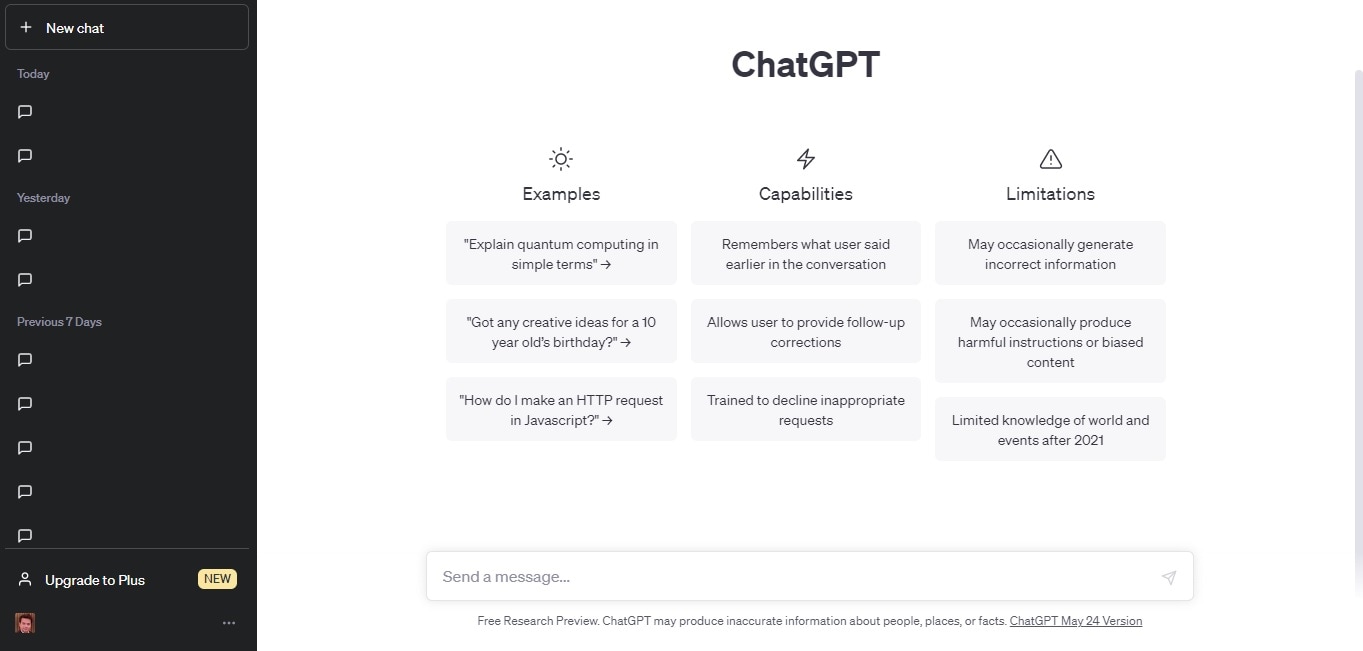
Key Features
Here are two features of ChatGPT for prototyping and UX designs.
- Remarkable Natural Language Processing (NLP) Power. ChatGPT understands and conveys design requirements and prompts intended by the user.
- Contextual Understanding. The chatbot understands the context across multiple interactions to provide detailed instructions about prototypes.
Bard AI
Bard AI automates the creation of interactive prototypes based on user inputs and descriptions. This saves designers significant time and effort.
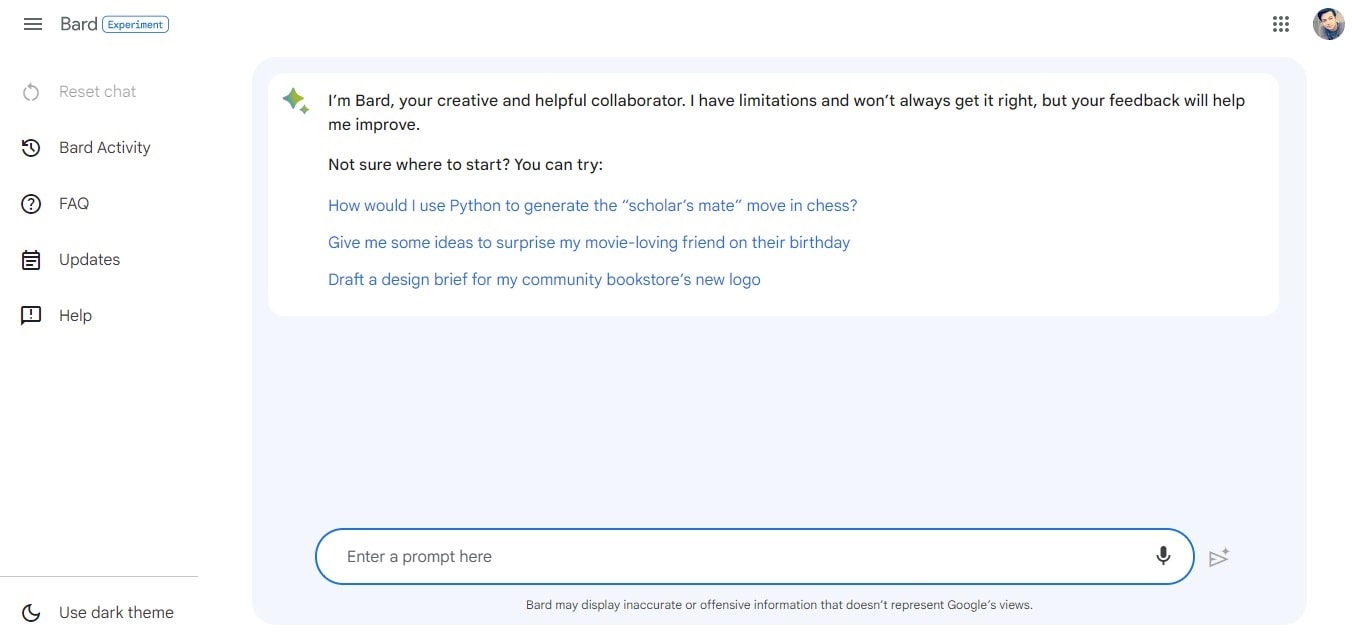
Key Features
Bard AI offers features for prototyping you can take advantage of right away. Here are two for your reference.
- Prototype Generation. Bard AI generates prototype ideas based on user inputs and descriptions in seconds.
- Multiple Drafts. After generating prompts, the tool creates multiple drafts for the user.
Hypotenuse AI
Hypotenuse AI is an AI chatbot that provides design recommendations and real-time prototype previews.

Key Features
Hypotenuse AI offers valuable suggestions for improving the usability and appeal of designs. Here are two of its highlights.
- Design Recommendations. Hypotenuse AI provides design recommendations and suggestions based on user requirements. This helps designers enhance the quality of prototypes.
- Social Media Copy. The tool creates effective ads and social media on the fly.
Writesonic
Writesonic is an AI chatbot that specializes in generating written content. It can be a valuable tool for creating documentation and annotations for UX designs.
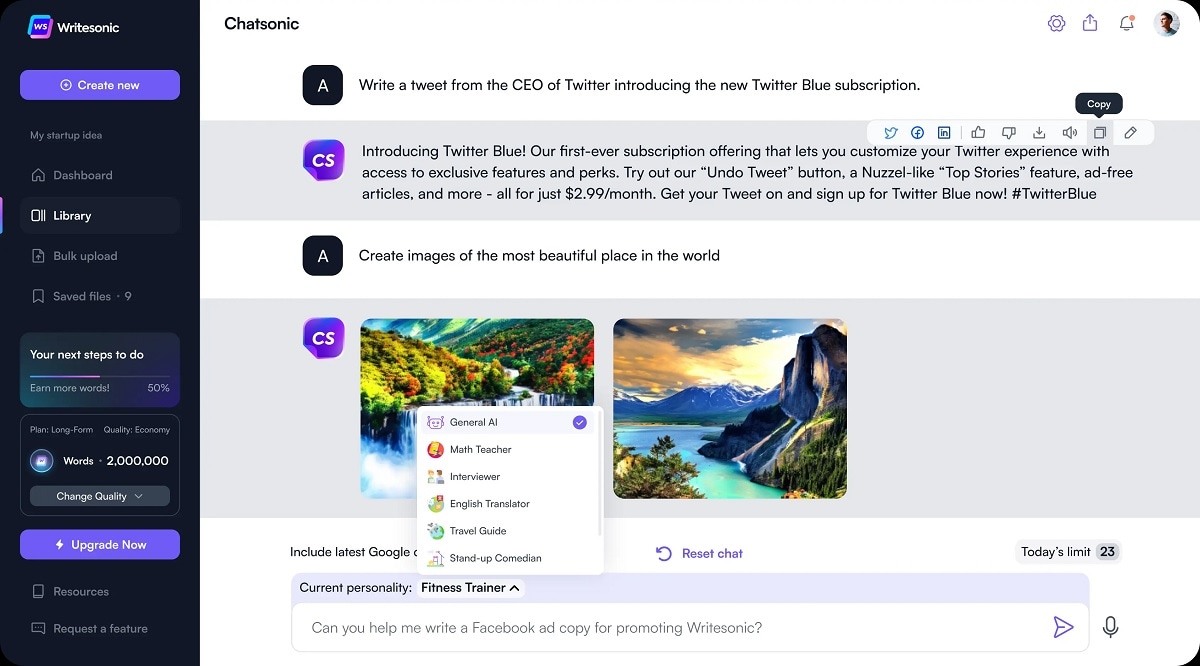
Key Features
Here are two of Writesonic's selling points.
- Copywriting Assistance. Writesonic generates written content to help you create UI copy and document design decisions.
- Content Variations. Writesonic provides multiple variations of the generated content. It gives designers a range of options to choose from and refine messaging for prototypes.
Edraw AI of Wondershare EdrawMind
EdrawMind, one of the most excellent mind-mapping tools, now combines AI power for mind-mapping and wire-framing capabilities. It allows you to design prototypes directly for iterative design improvements.
Key Features
EdrawMind's new Edraw AI is a real-time multi-user collaborative chatbot. It can boost work efficiency and break down walls between team players. Here are two of its celebrated features.
- One-click Mind Map Creation. Edraw AI creates logically structured mind maps in seconds with its one-click mind map creation function.
- Smart Annotation. Edraw AI quickly adds notes and information on your mind maps to streamline your brainstorming process, saving time and effort.
In the realm of prototyping and UX design, Mockitt AI combined with Wondershare Mockitt is one of the leading chatbots today. The tool gives you the power to generate high-quality prototypes in a matter of seconds swiftly. Its ability to understand user requirements and convert them into interactive prototypes sets it apart from other AI chatbots in the market.
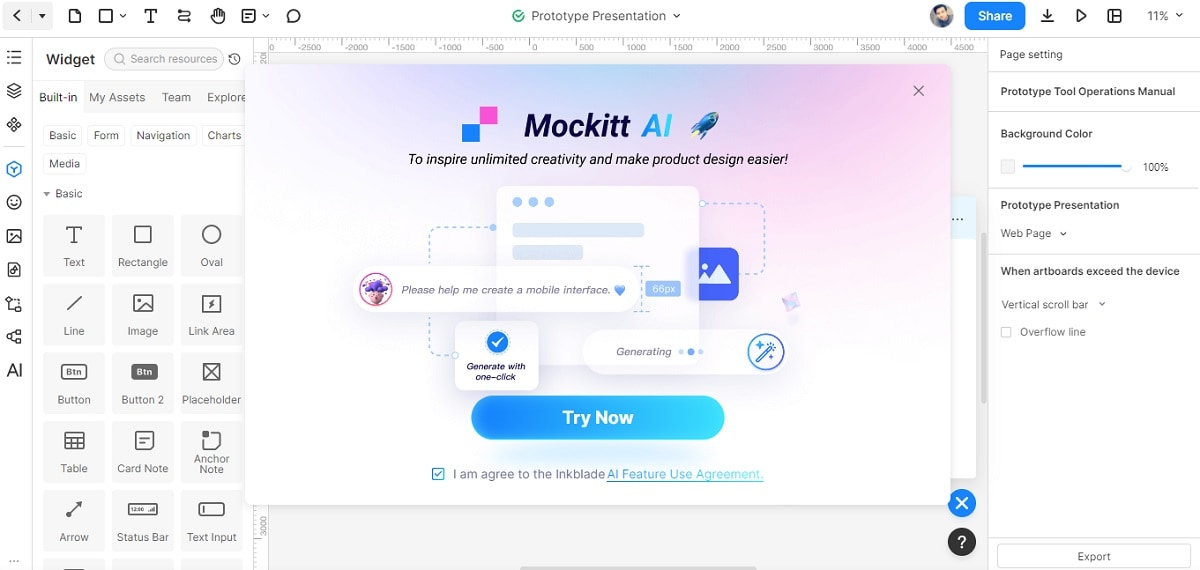
Key Features
Mockitt AI's capabilities make it an invaluable tool for designers. Here are its key features.
- AI Chat. Mockitt AI provides suggestions, answers questions, and offers guidance in seconds.
- AI Component Generator. The AI Widget Generator allows you to generate UI widgets that can be customized and integrated into your prototype designs.
- AI Prototype Generator. You can create prototypes using built-in templates or generate one from scratch.
- Magic Fill. Magic Fill completes your ideas based on the context. This can save you time during the content creation phase.
Sample Prototyping Prompts Using Mockitt AI
Below are some quick examples of Mockitt automatically generating prototypes using the Mockitt AI tool.
Creating a Prototype for a Ride-Sharing Service
By providing this prompt, Mockitt AI understands the intention to design a mobile app prototype for a ride-sharing service. It will then initiate a conversation to gather details like critical features, user flow, visual preferences, etc.
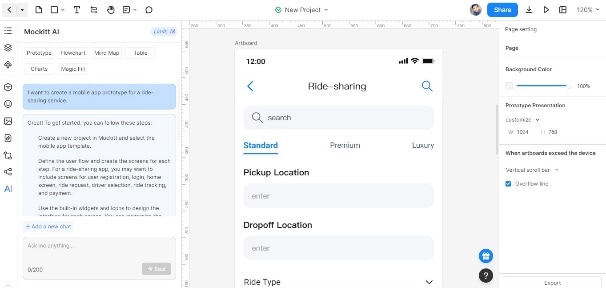
Prototype for an E-Commerce Platform
This prompt informs Mockitt AI about the objective of designing a web prototype for an e-commerce platform. The sample uses the Prototype generator tool to create a sample for an e-commerce app from scratch.
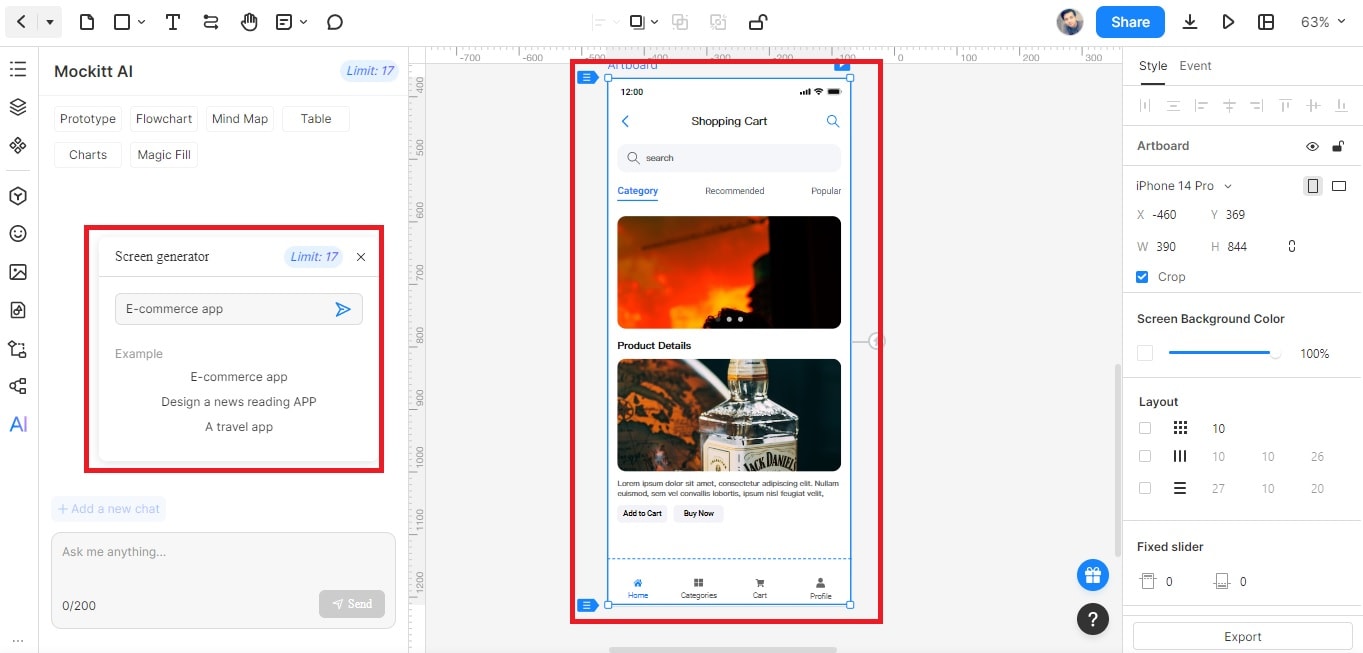
Mockitt AI enables you to create interactive prototypes with ease. Follow these steps to generate prototypes using Mockitt AI:
Step 1A: Launch Mockitt AI and click New to create a new project.
Select the desired canvas size and orientation based on your prototype's requirements.
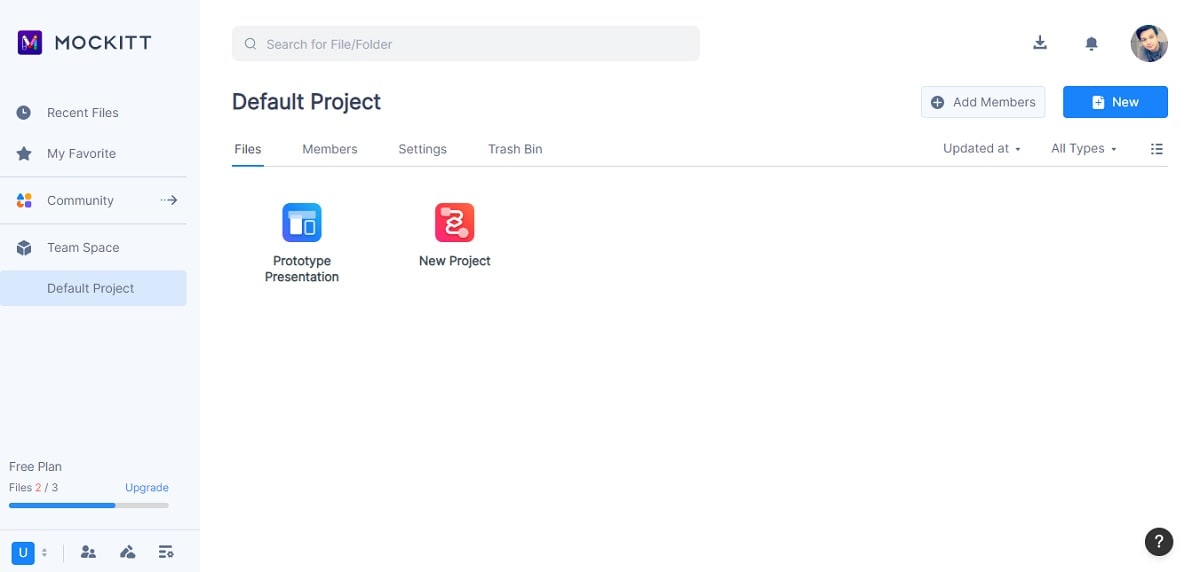
Step 1B: Select from various Prototype Templates available to get you started immediately.
Or click the Explore Templates button to browse for more templates.
Step 2: Click the AI button from the lower left sidebar to use Mockitt AI.
Utilize the chatbot interface to design the visual elements of your prototype. Next, drag and drop widgets, icons, and images onto the canvas. Arrange your prototype to create your desired layout.
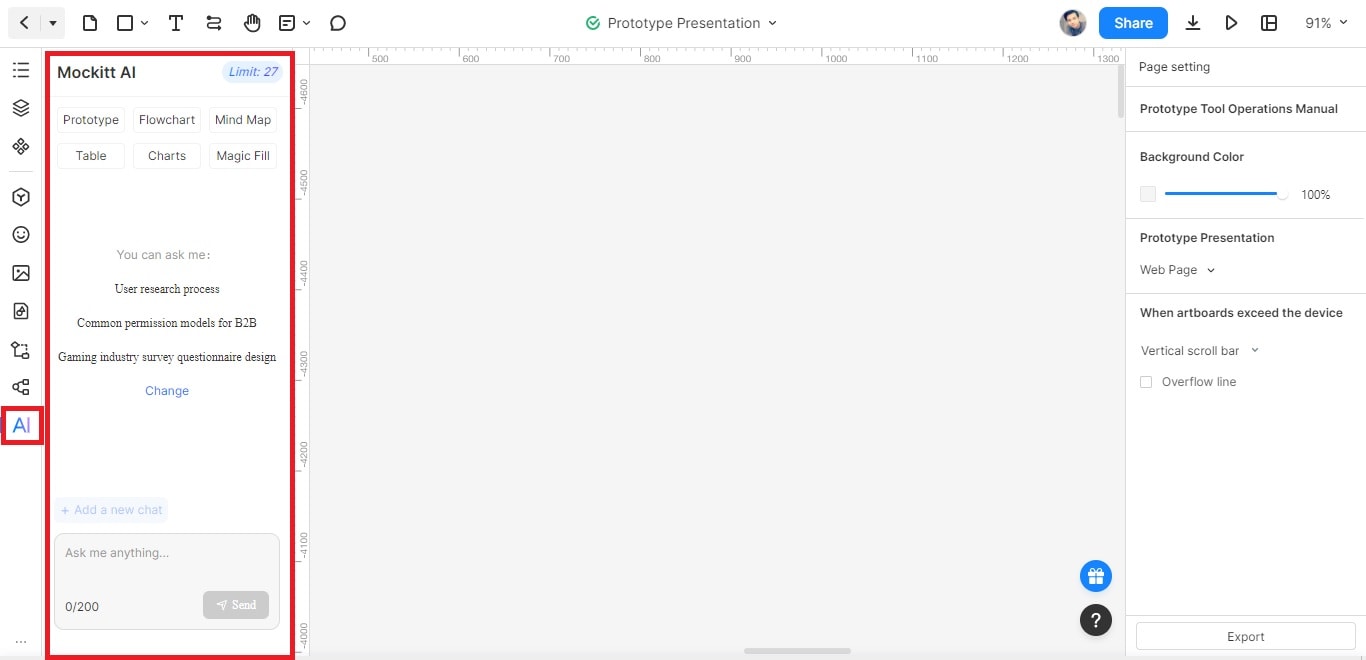
Step 3: Preview your prototype and Share it with team members or stakeholders for feedback.
Iterate and refine your design based on the received input. Once done, Export it in various formats, such as HTML, PDF, or PNG. Collaborate seamlessly by inviting team members to view and comment on the prototype.
Conclusion
AI chatbots have proven to be valuable assets for content creation in design. They offer enhanced efficiency, consistent quality, and scalability. However, users must consider limitations such as the lack of human touch, limited creativity, and potential errors.
Despite that, Mockitt AI is still a reliable choice capable of addressing these challenges. Its advanced algorithms empower your prototyping process without sacrificing the quality of the project. Try Mockitt AI now to take your content creation in design to the next level.

